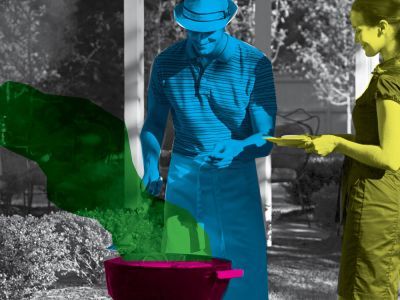The city and ritual in Lisa D'Amour's Detroit

Final-year actor Wyatt Martin explores the themes of Lisa D'Amour's Obie Award winning play.
In February 2019 Guildhall School presents Lisa D’Amour’s Obie Award winning play Detroit – a fresh, offbeat look at what happens when we dare to open ourselves up to something new.
Ahead of the performances, Guildhall School final year actor Wyatt Martin, playing the part of Frank, tells us more about the play by exploring two of its themes: the city and ritual.
Detroit
Lisa D’Amour recalls that the title came to her halfway through writing the play. While not being particular to Detroit, the city has a metaphorical weight to Americans; evoking anxiety, the death of industry, and the failure of a particular American way of life.
Detroit is a prime example of the rise and fall of the American Dream. In the early twentieth century the city’s population increased as people moved to Detroit to work at the big three auto companies: Ford, General Motors, and Chrysler; peaking at almost 1.85 million in 1950. As the city’s population increased, so did the need for housing, giving rise to the prolific construction of model home communities - the classic “cookie cutter” style houses that constitute the first, second and third ring suburbs that still permeate much of America today.
What seemed like a promised land of opportunity began to fail as the reliance on a single industry would lead the city into a downward spiral of economic turmoil, widespread racial tension and corrupt leadership that would usher in the city’s downfall. In 2013, Detroit filed for bankruptcy: at $20 billion, the largest municipal bankruptcy filing in US history.
With endemic poverty on the rise and unemployment at an all-time high, many of the previously lively and idyllic suburban neighbourhoods have been nearly vacated, leaving abandoned houses in the first ring suburbs most neglected by the city, right next to overdeveloped properties where residents still cling to their lifelong investments. In a place where the average police response time is 58 minutes, houses burn down on a regular basis and fear is commonplace.
Ritual
Human beings have always been fascinated with ritual. What began as handprints on cave walls and tribal gatherings in firelight 40,000 years ago evolved into burnt offerings to spirits, gods, and goddesses, the pouring of libations, and eventually into a greater and greater organisation of festivities, resulting in Halloween, New Year’s Eve, Black Friday, and all the other hallmark holidays that we recognise today.
During the Mardi Gras festivals in Lisa D’Amour’s hometown of New Orleans, residents take to the streets in colourful masks and glittering beads, dancing riotously and drinking copious amounts of bourbon to celebrate indulgence before Lent. Indeed, in many rituals across the globe there is often a close link between intoxication, dancing, altered states of consciousness, and the donning or shedding of the masks that liberate or confine us, in an effort to bring us all closer together.
Wherever we come from or whatever you believe in, our rituals say a lot about us. They arise from our innate desire for connection; to each other, and to something larger than ourselves.
Detroit, directed by Charlotte Westenra, runs from Monday 4 February – Thursday 14 February in Milton Court Theatre. Tickets are available via Barbican Box Office. Book your tickets now.